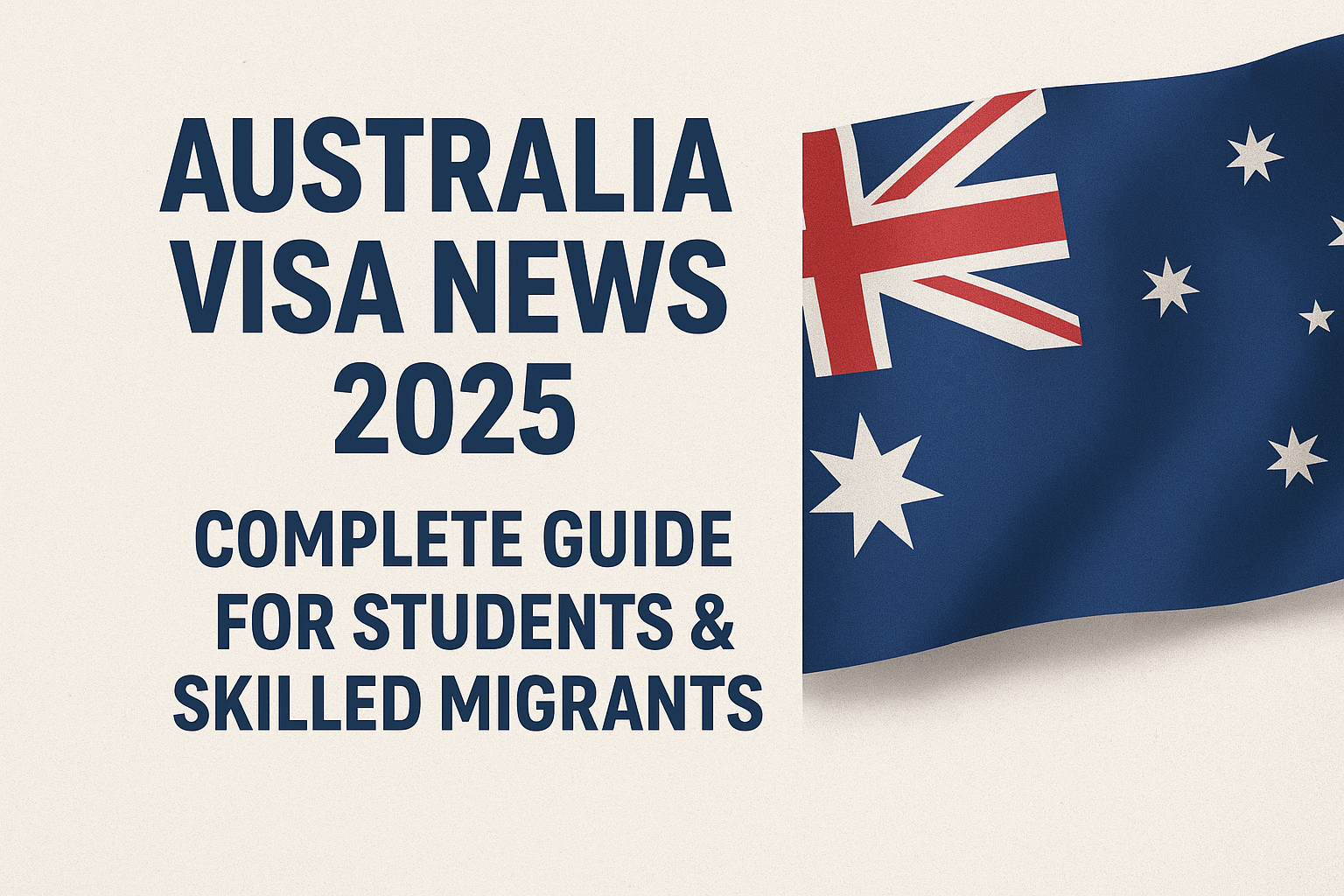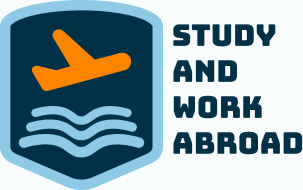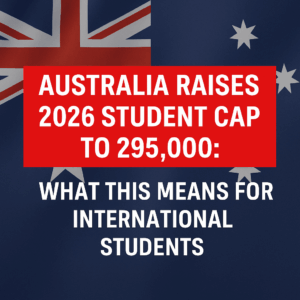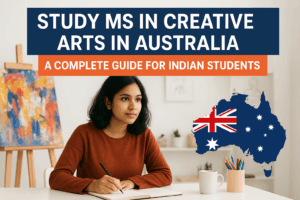Call Us:+91-9920234749, +91-9833420909 info@studyandworkabroad.in

Australia Visa News 2025: Complete Guide for Students & Skilled Migrants
Australia continues to be one of the most attractive destinations for international students and skilled professionals. With high-quality universities, strong job opportunities, and a clear pathway to permanent residency, it remains a top choice for Indians planning their future abroad.
However, the Australian government has recently introduced several visa policy changes in 2025 to strengthen integrity, streamline migration, and ensure that only genuine students and skilled workers are welcomed. From new student visa rules to skilled migration allocations and upcoming visa categories, these updates are crucial for anyone planning to study, work, or settle in Australia.
This guide will walk you through all the important updates for 2025–26, including student visa changes, skilled migration programs, graduate work visas, new visa types, and compliance requirements.
Migration Program 2025–26
Every year, Australia sets an overall migration intake, balancing skill shortages, family reunification, and humanitarian needs.
For the 2025–26 program year, the government has allocated:
- Major share to the Skill Stream, prioritizing industries facing shortages such as healthcare, engineering, IT, construction, and education.
- Family Stream visas, mainly for partners and parents, forming the second-largest category.
- Special Eligibility visas, reserved for unique cases, taking up only a very small proportion.
This allocation reflects Australia’s focus on attracting international talent to address labour market needs. For Indian students, this means courses aligned with in-demand occupations (such as IT, nursing, and engineering) can significantly improve chances of long-term settlement.
State & Territory Allocations
In addition to the federal migration program, each Australian state and territory receives specific nomination allocations. These allow them to invite skilled workers and graduates who meet local labour needs.
For 2025–26, interim allocations have been released, with some states prioritizing healthcare and teaching professionals, while others are open to IT and trade occupations.
Here’s what Indian applicants should know:
- New South Wales (NSW) & Victoria (VIC): Remain highly competitive due to demand.
- South Australia (SA) & Tasmania (TAS): Often more flexible and welcoming for international graduates.
- Regional Areas: Territories like ACT, Northern Territory, and Western Australia provide added benefits, including faster nominations and extra PR points.
Monitoring each state’s official website is essential, as nomination requirements and eligible occupation lists change frequently.
Student Visa Updates
Studying in Australia remains a top goal for many Indians, but the student visa process has become stricter in 2025.
Key Changes:
- Confirmation of Enrolment (CoE) Requirement
- From 2025, students applying onshore must also provide a CoE (previously only required for offshore applications).
- This ensures only those with a genuine course offer can apply.
- From 2025, students applying onshore must also provide a CoE (previously only required for offshore applications).
- Genuine Student (GS) Requirement
- The old Genuine Temporary Entrant (GTE) has been replaced by the GS requirement.
- Students must now clearly show their primary intent is to study and benefit academically, not just to migrate.
- The old Genuine Temporary Entrant (GTE) has been replaced by the GS requirement.
- Financial & English Language Proofs
- Updated financial capacity thresholds mean students must show stronger proof of funds to cover tuition and living expenses.
- English proficiency requirements remain essential, with IELTS, PTE, or TOEFL scores required.
- Updated financial capacity thresholds mean students must show stronger proof of funds to cover tuition and living expenses.
For Indian students, this means well-prepared documentation is more important than ever to avoid rejection.
Visa Processing & Priorities
Visa processing is influenced by Ministerial Directions, which determine which applications are handled first.
- Ministerial Direction 111 (MD111): Offshore student visas are now prioritized, meaning faster processing for students applying from outside Australia.
- Skilled visas (Subclass 189, 190, 491) are processed based on occupation demand and state priorities.
Tips for Faster Processing:
- Submit complete and accurate documentation.
- Apply well ahead of your intended intake.
- Avoid applying with multiple CoEs, as this could delay your application.
Skilled Migration & State Nomination Pathways
Australia continues to offer strong opportunities for skilled professionals.
- Subclass 189 (Skilled Independent Visa):
- Points-tested and does not require state nomination.
- Highly competitive, with invitations going to those in priority occupations.
- Points-tested and does not require state nomination.
- Subclass 190 (Skilled Nominated Visa):
- Requires state or territory nomination.
- Offers a clearer PR pathway for students who study and work in specific states.
- Requires state or territory nomination.
- Subclass 491 (Regional Skilled Work Visa):
- Requires nomination from a regional state or sponsorship by an eligible family member.
- Comes with PR benefits after living and working in the region for a few years.
- Requires nomination from a regional state or sponsorship by an eligible family member.
For Indian graduates, studying in regional universities often increases PR chances due to additional points.
Graduate / Post-Study Work Visa (Subclass 485)
The Temporary Graduate Visa (Subclass 485) remains a valuable option for international students completing studies in Australia.
Key Points for 2025:
- Eligibility: Available for graduates of bachelor’s, master’s, and doctoral degrees.
- Duration:
- Bachelor’s and Master’s: 2–3 years.
- Doctoral graduates: 4 years.
- Regional graduates: Extra 1–2 years depending on the location.
- Bachelor’s and Master’s: 2–3 years.
- Changes: Some short-term courses like graduate certificates or diplomas may no longer qualify, aligning the program with long-term skill needs.
This pathway allows graduates to gain local work experience, strengthening their PR applications.
New & Upcoming Visa Options
Two new visas are in the pipeline, expected to roll out in 2025–26:
- Skills in Demand Visa
- Designed to replace or reform the Temporary Skill Shortage (subclass 482).
- Will target critical sectors facing severe shortages.
- Offers a clearer PR pathway for eligible workers.
- Designed to replace or reform the Temporary Skill Shortage (subclass 482).
- National Innovation Visa
- Focused on entrepreneurs, researchers, and highly skilled professionals.
- Aims to attract talent in advanced technology and innovation sectors.
- Focused on entrepreneurs, researchers, and highly skilled professionals.
Both visas highlight Australia’s focus on attracting talent that boosts economic growth.
Fees, Compliance & Integrity Measures
Along with policy changes, compliance rules have also tightened in 2025.
- Visa Fees: Student visa fees have seen an increase compared to previous years.
- Financial Proofs: Applicants must now show higher funds to ensure they can support themselves.
- Integrity Rules:
- No more concurrent CoEs (students cannot hold multiple offers).
- High-risk applications are subject to stricter scrutiny.
- Academic performance and attendance will be monitored more closely.
- No more concurrent CoEs (students cannot hold multiple offers).
These measures aim to maintain quality in Australia’s education system while discouraging misuse of student visas.
What Students & Migrants Should Do Now
If you are planning to study or migrate to Australia in 2025–26, here are key steps:
- Prepare documentation early – financial statements, English test scores, health checks, and police certificates.
- Choose courses strategically – prioritize qualifications linked to Australia’s skill shortages.
- Stay informed on state nomination rules – each state updates its eligibility lists regularly.
- Apply early – avoid last-minute visa lodgments, as processing times may vary.
- Seek expert guidance – professional consultants can help navigate complex changes.
Conclusion
The year 2025 brings major updates to Australia’s visa system. From stricter student visa requirements to evolving skilled migration pathways and new visa categories, the government is ensuring that genuine students and skilled professionals are prioritized.
For Indian students and skilled workers, Australia still offers excellent opportunities for education, work experience, and eventual permanent residency. With proper planning and the right strategy, applicants can take advantage of these changes to secure their future in Australia.
Stay updated, stay prepared, and take the next step toward your Australian journey today.
FAQs
Q1. What is the Genuine Student (GS) requirement?
It’s a new rule replacing the GTE, requiring students to prove their primary purpose is education, not migration.
Q2. How long can I stay on a Subclass 485 visa?
2–4 years depending on qualification and location, with longer stays in regional areas.
Q3. Can I still apply for PR after studying in Australia?
Yes, many students transition from a Subclass 485 visa to PR through skilled migration or state nomination.
Q4. Which states are easier for Indian students to get nomination?
Smaller states and regional areas like South Australia, Tasmania, and ACT often provide more opportunities.
Q5. Has the financial requirement for student visas changed?
Yes, students now need to show higher funds to cover tuition and living expenses.



